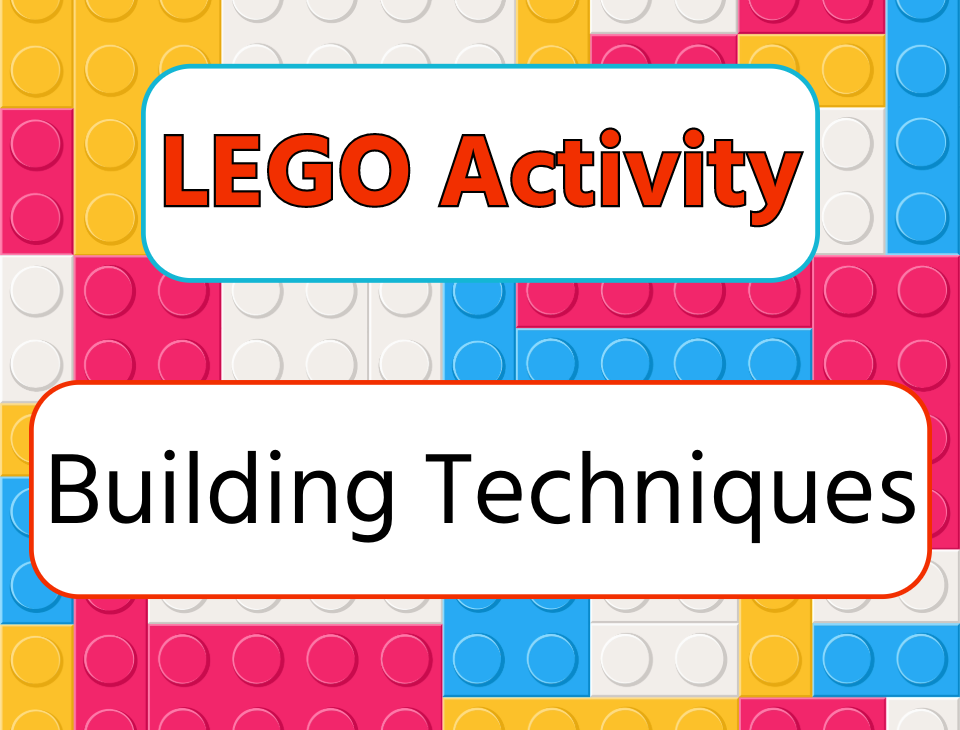LEGO Mystery Model Mayhem
- David Thomascall
- Jun 3, 2023
- 4 min read
Updated: Apr 19, 2025
Unleash Your Students' Observation and Communication Skills with this Hands-On LEGO Challenge. We know the importance of helping students develop strong observation and communication abilities - after all, these are essential skills. But how do we make these critical skills engaging and meaningful for our students? Enter the LEGO Mystery Model Mayhem - a dynamic, role-swapping challenge that gets students observing, describing, and constructing in a fun, collaborative way. Adaptable for different ages and skill levels, this activity tasks small teams with recreating hidden LEGO models through careful observation and clear communication. By taking turns as the "builder," and "observer," each student gets the chance to hone their ability to remember details, articulate their findings, and work together toward a common goal.

Resources
Observation and Communication
As teachers, we know how important it is for our kids to develop strong observation and communication skills. Students need to learn these basic skills so they can become active, interested learners, good team players, and clear, confident speakers. These are skills that will help them throughout their lives, no matter what road they choose.
Good communication skills are the key to learning.
Good communication skills are the key to learning. Students should feel free to ask questions, take part in discussion, and explain how they came to their conclusions. This back and forth helps them clarify their understanding, learn from peers, and take an active roll in their own education. But the value of these skills extends far beyond the classroom, the ability to communicate clearly and work cooperatively prepares students for the demands of future jobs and personal relationships. Through good communication skills, they plan their work, share their ideas, and work together to reach goals. By putting an emphasis on speech and observation skills in our classrooms, we give our students the tools they need to become involved, flexible learners and give them a solid base for future success.
Activity
To prepare for the LEGO building activity, create a set of three models that vary in difficulty, including one easy model, one that is moderately hard, and one challenging design. The Resources section provides example models to inspire your creations. Give each student group a set of LEGO pieces that is big enough to build one model at a time, but not necessarily enough to build all three at the same time. To make sure that groups have all the LEGO parts they might need during the activity, have an extra bin of LEGO pieces ready.
Explain to students that to challenge their commumication skills they are going to construct an identical replica of your models, but with a twist: the person building the model will not see it. Their teammates will get to look at the model and then describe how to build it. But before jumping into the activity, students will hone their observation skills by finding the differences between very similar pictures. There are two videos in the lesson slideshow that you can use to practice this.

To start the activity, divide students into groups of three. Assign one student as the builder (who builds the model without seeing it), one as the first observer (who views the model and describes it to the builder), and one as the second observer (who listens to the first observer's description, then views the model themselves before providing additional details to the builder). If your class doesn't divide evenly into groups of three, you can have some groups that are pairs so that one is the builder and the other is the observer. Remind them that only the builder can touch the LEGO pieces.
Hide the model behind a barrier like a book or poster board. Call up the first observers and allow them about a minute to view the model. The first observers then returns to their team to describe the model to the builder while the second observers watch the building process. After a few minutes, call the second observers up for a second one-minute viewing of the model. Allow a few more minutes for groups to build based on both observers' descriptions. When time is up, have students bring up their builds and let them compare their models to the original. Point out any differences or similarities, between the two models.

After checking the first model, the students switch roles. The first observer becomes the builder, the second observer becomes the first observer, and the previous builder becomes the second observer. Repeat this process so that by the third model, each student has played every role. Emphasize that all students will get a chance to be the builder. For pairs of students, they simply switch between being the builder and observer each round.
Allow middle school or upper elementary school kids to find their own ways to communicate as part of the learning process. For kids younger than third grade who might have trouble describing the model, give them help by:
Showing an example built model and modeling how to describe it
Suggesting they focus observations on the bottom rows
Allowing both observers to view together
Simplifying the models
To wrap up the activity, ask students about the challenges they faced and the communication strategies that proved most successful. Here are some possible discussion prompts you can use:
What communication strategies worked best for your team?
Did any of the "Spot the Difference" practice earlier help with observing the model for building?
What were some strategies you used to remember the patterns of Legos on the model?
Did your strategies change as the models became more complicated?
Do you think it would be better to have only one observer see the model twice or have two different observers?

.jpeg)





